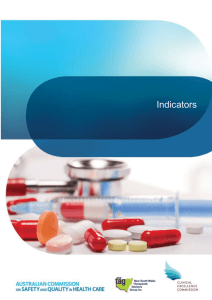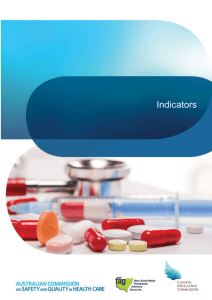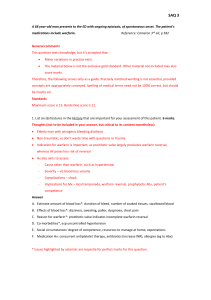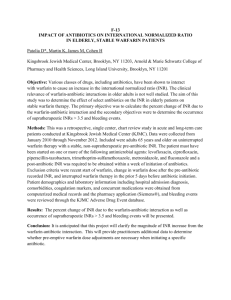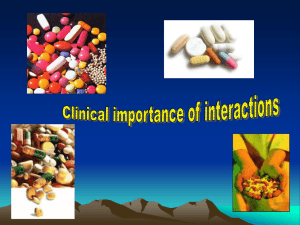WORD - Australian Commission on Safety and Quality in Health Care
advertisement
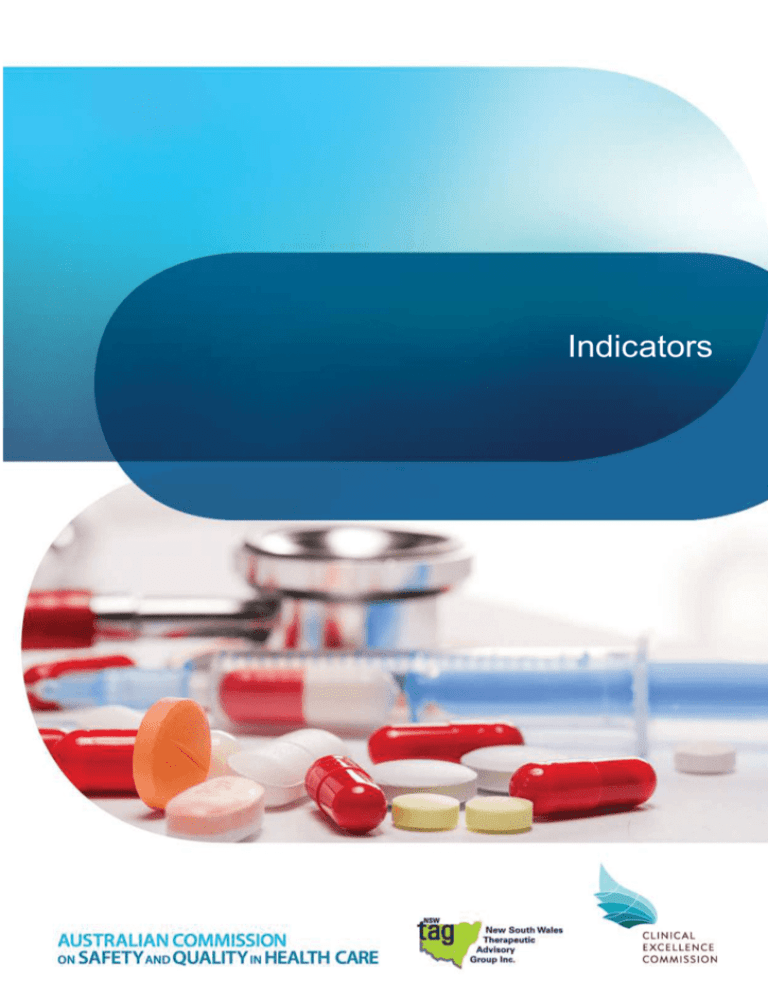
Indicators Antithrombotic therapy QUM domain: Safe and effective use 1.4 Percentage of patients prescribed hospital initiated warfarin whose loading doses are consistent with a drug and therapeutics committee approved protocol Purpose This indicator addresses effectiveness of processes that encourage safe initiation of high risk medicines such as warfarin. Background and evidence Warfarin is a widely used drug with potentially fatal side effects. There is risk of over-anticoagulation in many groups of patients.1 Use of a warfarin initiation protocol can help avoid harm to patients through over -anticoagulation during the loading phase and helps achieve a stable therapeutic International Normalised Ratio (INR) in a shorter time. 1 Warfarin loading dose advice is provided in the Australian Medicines Handbook 2 and may provide a basis for protocol development. At a minimum, the protocol should take into account dosing requirements for people of different ages and medical conditions, such as heart failure, liver failure, severe infection, reduced oral intake, or concurrent broad spectrum antibiotic use. Key definitions Patients prescribed hospital initiated warfarin refers to patients who are commenced on warfarin therapy during the current admission. Loading doses are defined as the initial doses for a patient who is commenced on warfarin, as defined by the local hospital protocol (see below). A drug and therapeutics committee approved protocol refers to a schedule or protocol for initiating warfarin in a standardised way. The protocol for loading doses, whether developed locally or at an area, state or national level, should be approved by the hospital drug and therapeutics committee (DTC) or equivalent. Data collection for local use Please refer to the section Using the National Quality Use of Medicines Indicators for Australian Hospitals for guidance on sample selection, sample size, measurement frequency and other considerations. Inclusion criteria: Patients aged 18 years and over who are commenced on warfarin during the current hospital admission. Exclusion criteria: Patients previously prescribed warfarin in which warfarin has been re -initiated. Recommended data sources: Medication charts. The data collection tool for QUM Indicator 1.4 assists data collection and indicator calculation. National Quality Use of Medicines Indicators for Australian Hospitals 2014 2 Data collection for inter-hospital comparison This indicator may be suitable for inter-hospital comparison. In this case definitions, sampling methods and guidelines for audit and reporting need to be agreed in advance in consultation with the coordinating agency. Indicator calculation Numerator = Number of patients on hospital initiated warfarin whose loading doses are consisten t with a DTC approved protocol Denominator = Number of patients on hospital initiated warfarin in sample Limitations and interpretation This indicator does not assess re-initiation of warfarin in patients who had ceased it for a surgical procedure or other reason. Nevertheless, appropriate re-initiation of warfarin should also be concordant with approved guidelines and protocols. Further information Medication Safety Self Assessment for Antithrombotic Therapy in Australian Hospitals 3 (MSSA-AT) can help identify potential strategies for improvement with this and other indicators. MSSA -AT encourages development of robust systems for safe prescribing, dispensing, administration and monitoring of antithrombotic therapy. MSSA -AT is available at www.cec.health.nsw.gov.au This indicator can be used to assist hospitals in meeting the National Safety and Quality Health Service Standard 1 [items 1.2.1, 1.2.2, 1.5.2, 1.6.1, 1.6.2, 1.7.2] and Standard 4 [items 4.1.1, 4.2.1, 4.2.2, 4.5.1, 4.5.2]. 4 References 1. Roberts G, Adams R. Impact of introducing anticoagulation-related prescribing guidelines in a hospital setting using academic detailing. Ther Clin Risk Manag 2006; 2: 309-316. 2. Australian Medicines Handbook. Australian Medicines Handbook Pty Ltd, 2012. 3. Medication Safety Self Assessment for Antithrombotic Therapy in Australian Hospitals: Institute for Safe Medication Practices USA (Adapted for Australian use by NSW Therapeutic Advisory Group and the Clinical Excellence Commission), 2007. 4. Australian Commission on Safety and Quality in Health Care. National Safety and Quality Health Service Standards. Sydney, ACSQHC, 2012. National Quality Use of Medicines Indicators for Australian Hospitals 2014 3
